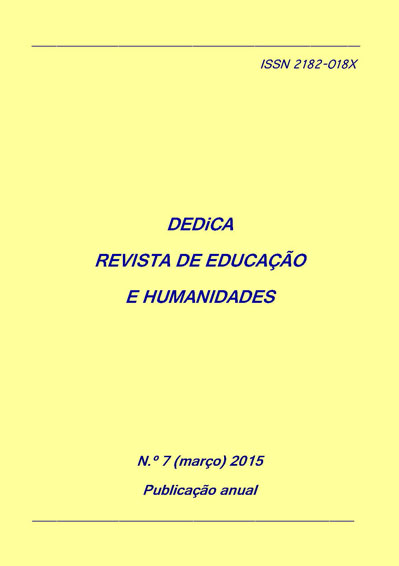Transit of identities: life history of Erika Kuhn, visual artist
DOI:
https://doi.org/10.30827/dreh.v0i7.6942Keywords:
identity, life history, meta-narratives, phenomenology and theory of the everydayAbstract
This paper has been designed from the life history of the visual artist Erika Kuhn as a resource to observe the transit of identities in times of liquid currencies and telematics societies, to show that the identities of those going through a visual artist is the need to reaffirm their existence in times of uncertainty. Life Story is an alternative to the crisis of metanarratives that Lyotard poses in the postmodern condition, in the sense that the birth narratives lived and experiential world of visual artist and not as suggested by the Enlightenment or scientism.
The sense of being reflects the lived world, the everyday world and the social world of the visual artist, social commitment is a reflection of the perspective of Joseph Beuys (Morgan, 2003: 109). The exchanges and negotiations Erika Kuhn performed through technological channels break with the approach of telematics societies, as in these, there are remnants of trust and respect not agreed (Georg Simmel, 1900). The subjective experiences of the visual artist, you can grasp cognitive processes that denature the daily practices and enable the presence of the Other.
Phenomenology explains the attitudes and the relationship with the other, human actions in time, space and physicality (Husserl 1998), and the theory of the everyday rescues the meanings of the identity of the artist in the art of making (Certeau, 1996).
Downloads
References
Aceves Lozano, J. E. (1997). Experiencia biográfica y el curso de la acción colectiva en las identidades emergentes. Ponencia del XX Congreso Internacional de la Latin American Studies Association (LASA). Guadalajara, Jalisco, México, 17-19 de abril de 1997.
Bajtín, M. (2000). Yo tambien soy (Fragmentos sobre el otro). México:Taurus.
Bajtin, M. (2002). La Cultura, Nosotros y los Otros. En M. Bajtín, Yo también soy (47-70). México: Taurus.
Bourdieu, P. (1984). Sociología y Cultura. México: Grijalbo.
Castells, M. (2004). La Era de la Información. Economía, Sociedad y Cultura. El poder de la Identidad. Vol II. México: Siglo XXI.
Certeau, M. de (1996). La invención de lo cotidiano. 1. Artes de hacer. México: Universidad Iberoamericana.
Derrida, J. (1997). Ulysse gramophone. Deux mots pour Joyce. Paris: Éditions Galilée
Fernández Christleb, P. (2011). Lo que se siente pensar. México: Taurus.
Fernández Christlieb, P. (1994). La Psicología Colectiva un fin de siglo más tarde. Su disciplina, su conocimiento y su realidad. Zamora, Michoacán: Colegio de Michoacán y Antrhropos.
Garay, G. de (1999). La historia con micrófono. México: Institut Mora.
Garay, G. de (1997). Cuéntame tu vida. Historia Oral: Historias de vida. México: Instituto Mora/Conacyt.
Giménez, G. (2009). Identidades Sociales. México: CONACULTA, Instituto Mexiquense de Cultura.
Herranz, R. (2008). Georg Simmel y la Sociología Económica: el mercado, las formas sociales y el análisis estratégico. Papers, 87 (2008) 269-286.
Husserl, E. T. (1998). Invitación a la fenomenología. Barcelona: Paidós I.C.E/U.A.B.
Jiménez, L. (2005). Interdisciplna. Escuela y arte. México: Conaculta-Cenart.
Lacan, J. (1980). Escritos. 2 vols.. México: Siglo XXI.
Levinas, E. (2004). La teoría fenomenológica de la intuición. Mexico D. F.: Salamanca, Epidermis, Sígueme.
Levinas, E. (1991). Ética e Infinito. España-Madrid: Visor.
Morgan, R. (2003). Del Arte a la idea. Madrid-España: Akal S.A.
Parsons, T. (1967). Ensayos sobre teoría sociológica. Buenos Aires: Paidós.
Schwanitz, D. (2006). La cultura. Todo lo que hay que saber. España: Punto de lectura.
Silbermann, A.; Bourdieu, P. (1971). Sociología del Arte. Buenos Aires: Nueva Visión.
Simmel, G. (1900). Filosofía del dinero. Londres: Routledge & Kegan Paul.
Simmel, G. (1977). Sociología. Estudios sobre las fomas de socialización. Revista Española de Opinión Pública. Centro de Investigaciones Sociológicas No. 49, 286.
Storey, J. (2002). Teoría de la Cultura y Cultura Popular. Barcelona: Octaedro.












